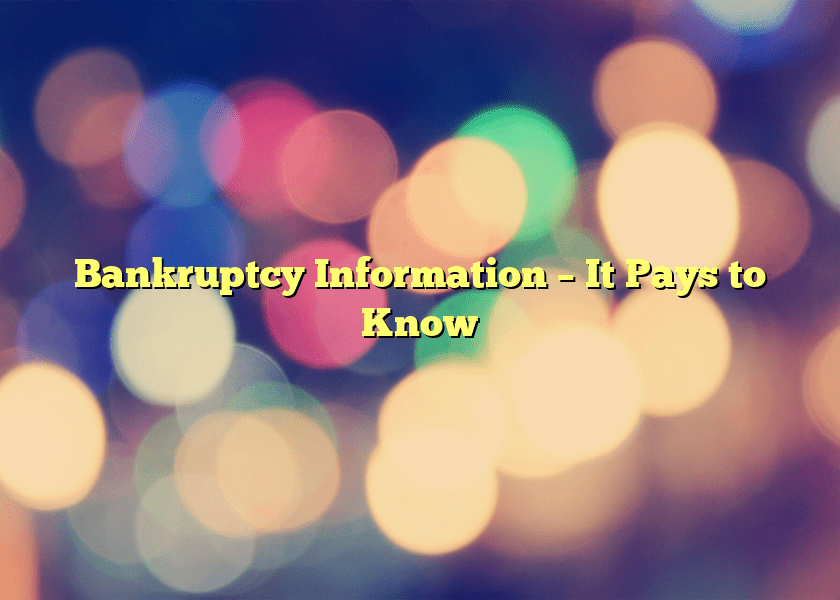Bankruptcy Information – It Pays to Know
Adequate bankruptcy information means at least knowing the definition of bankruptcy in law, its purpose, its effects (and limitations) on personal finances, the types of bankruptcy and other laws applicable, its legal proceedings, as well as the meaning of bankruptcy fraud.
Bankruptcy
In federal court, bankruptcy pertains to the mode of settling the liabilities or the legal accountability of a person or any organization for being unable to meet his financial obligations whether wholly or only partially. Its main purpose is to distribute the bankrupt’s assets equitably among his creditors through court-appointed beneficiary, and so, to relieve him as debtor from his liability. Thus, the (honest) debtor may no longer have to legally repay most or all of your debts monetarily. This shall give him (the bankrupt debtor) a new start financially by relieving him of most (not ‘honorably’ all) of his debts, at the same time repay his creditors in an orderly manner to the extent of his (the debtor’s) available remaining means for payment.
A person may only be legally declared as bankrupt if he has become insolvent as his current financial obligations are irremediable, or, as he is unable to pay all debts even if the full value of all assets were realized. Hence, his inability or impairment of ability to pay their creditors is legally affirmed.
Laws on bankruptcy, which also include definition of the types of bankruptcy, have often changed since its first adoption (1898). One must then gather sufficient bankruptcy information time and again to be aware of the changes made in its proceedings and to avoid needless bankruptcy blunders. Bankruptcy laws has developed since the Chandler Act (1938) and the Bankruptcy Reform Act (1978), and currently the Bush Administration has enacted a new (2005) bankruptcy law on abuse prevention and consumer protection – an act that may make it harder for some people to erase their debts by filing for bankruptcy.
Proceedings filing for bankruptcy are either voluntary to the debtor (the bankrupt), or, involuntary as requested by his creditors hoping to re-gain the portion they are owed. In the process, the person or corporation that has been declared/adjudged as bankrupt is no longer held accountable for his debts, as his preferred creditors (preferably his unpaid employees or the government) are paid in full, while the proceeds of his remaining (non-exempt) assets are shared to his other creditors).
This briefing of bankruptcy information may save you from paying your debts, or carefully avert you from deviating form its legal proceedings, yet, the debtor opting to file a bankruptcy declaration must know absolutely all bankruptcy information and practice vigilance in not intentionally using such bankruptcy information to commit legally accountable fraud.
